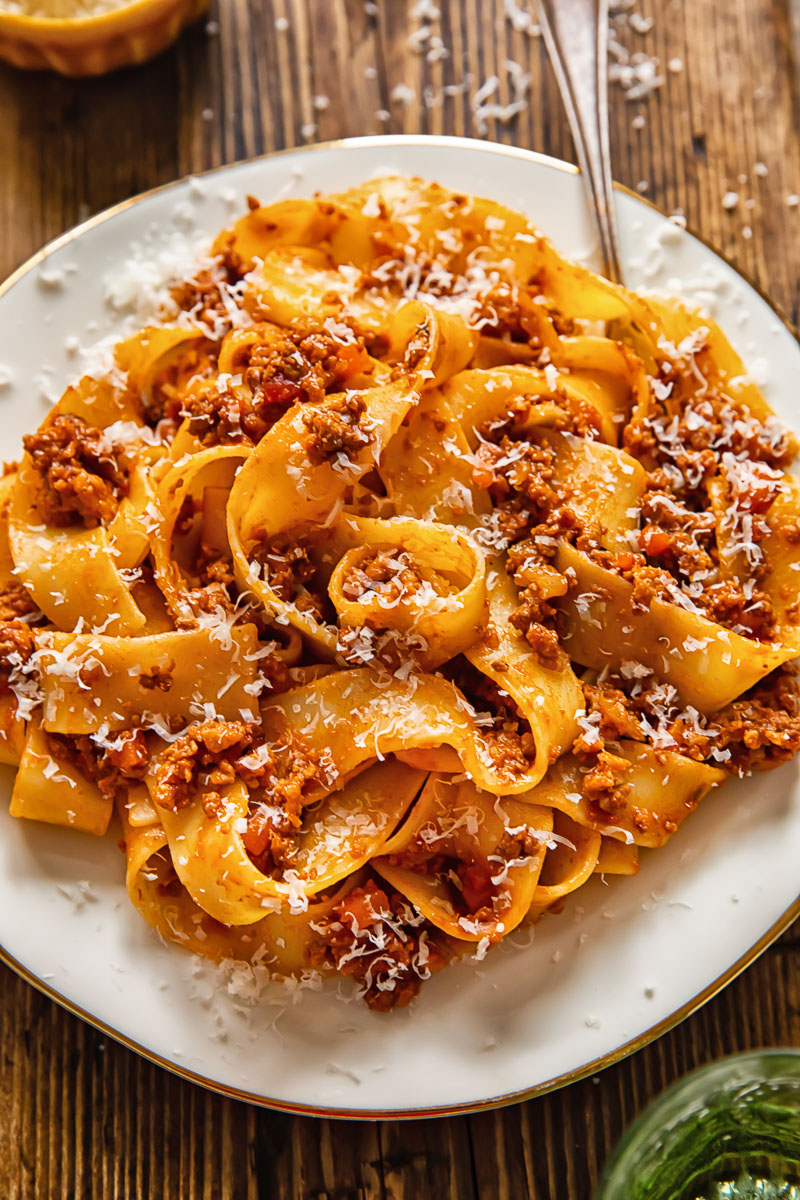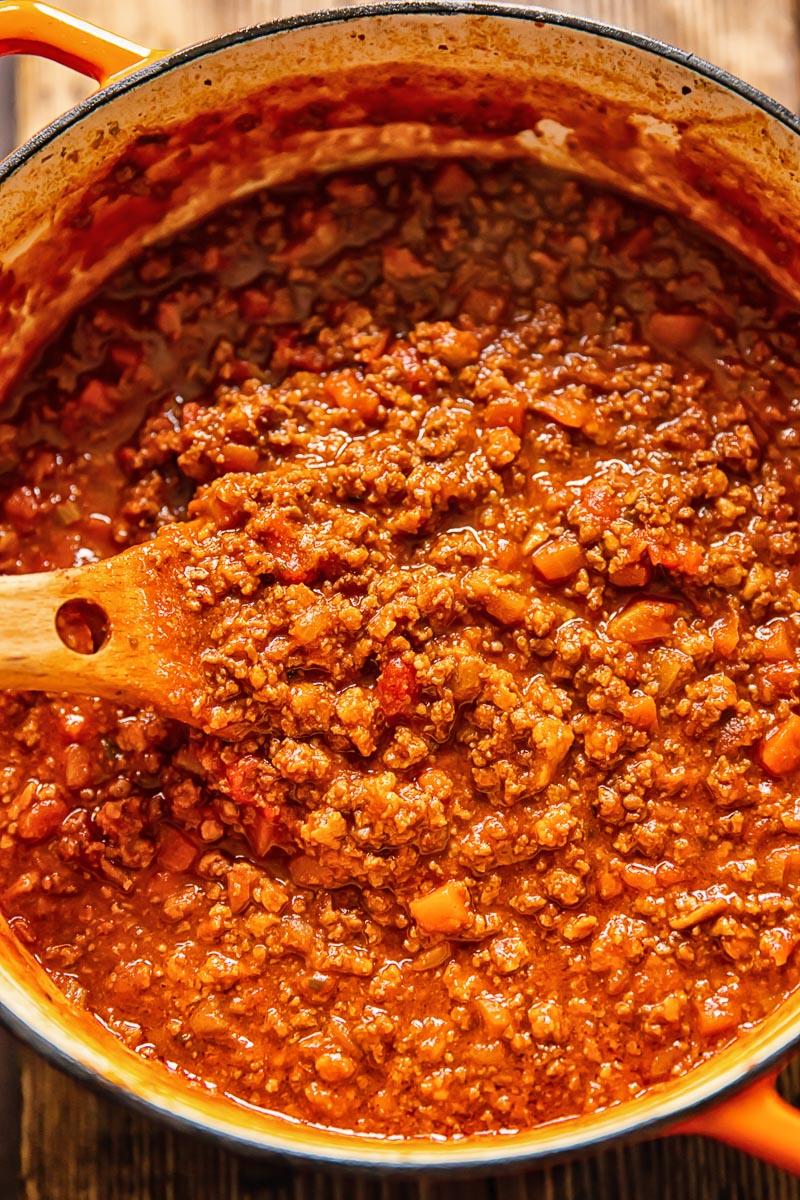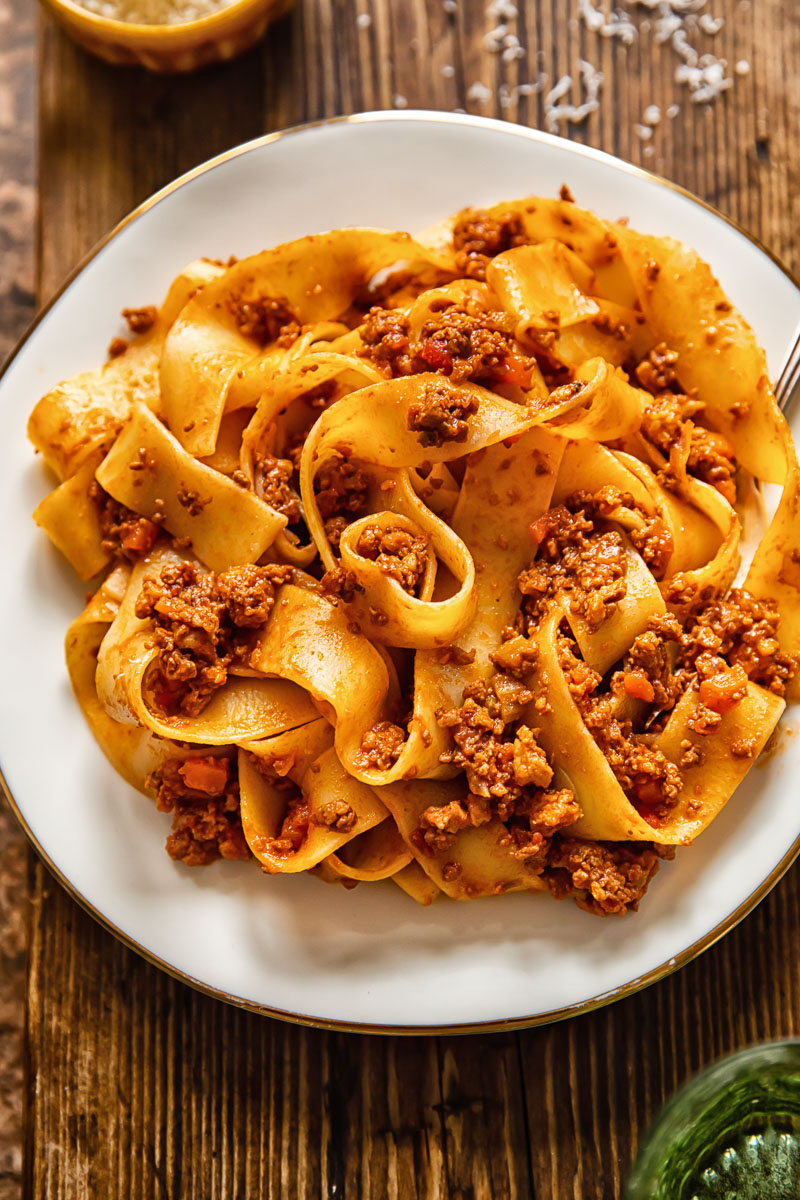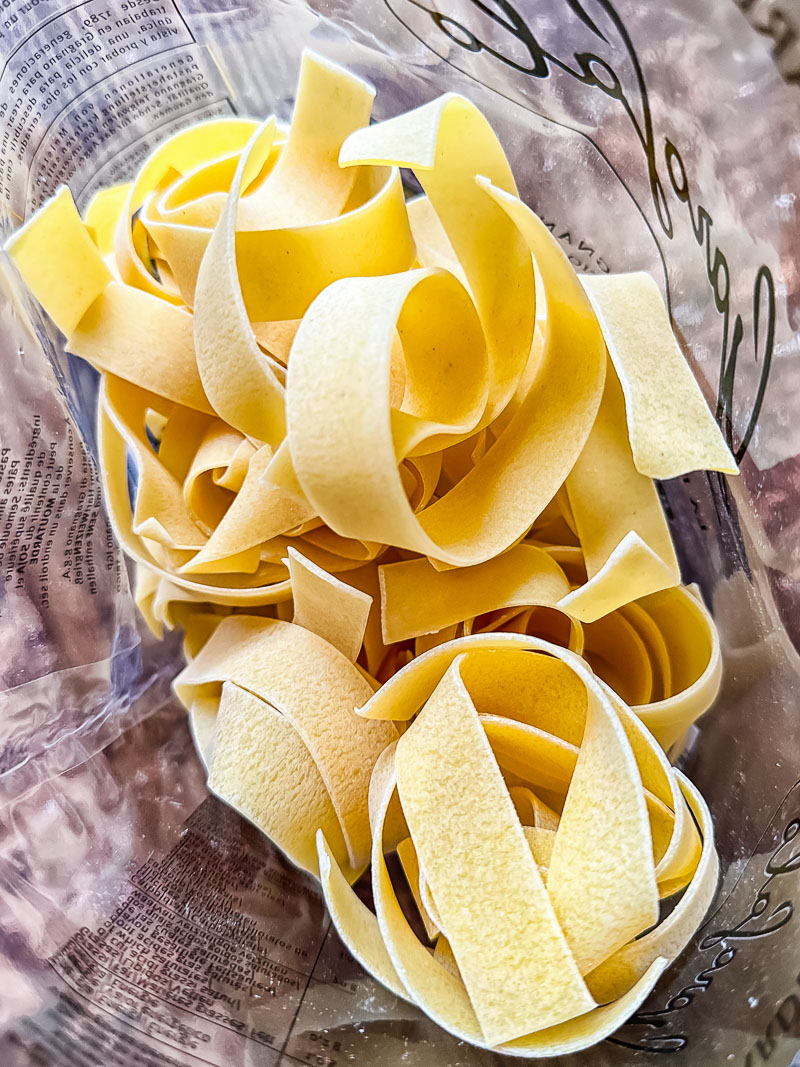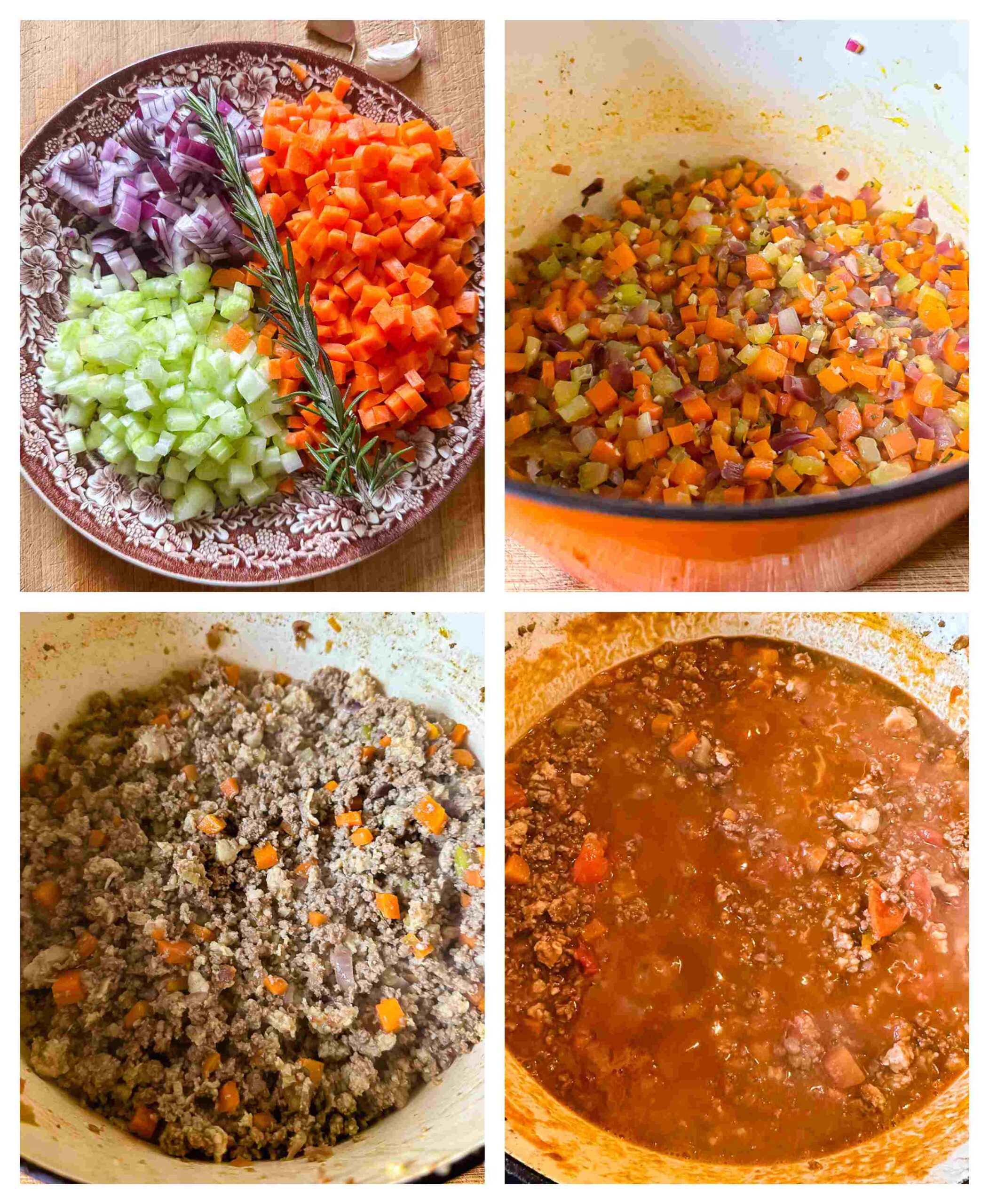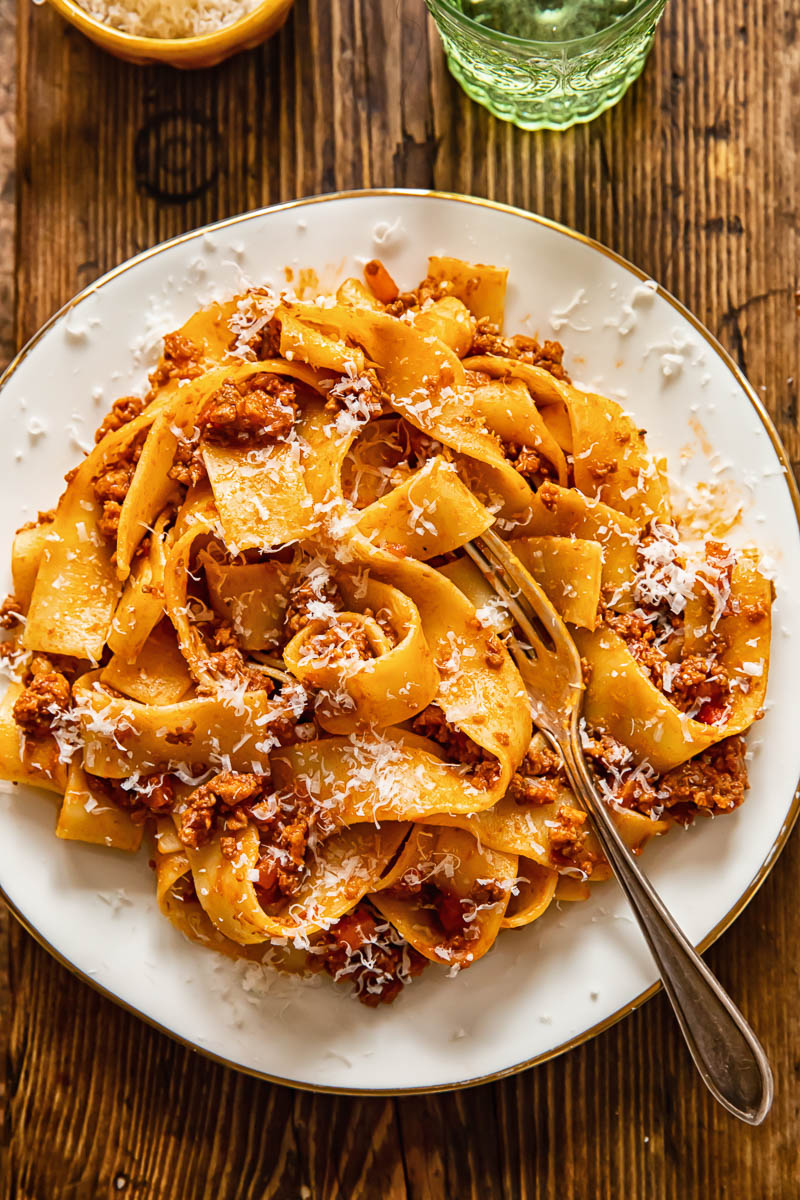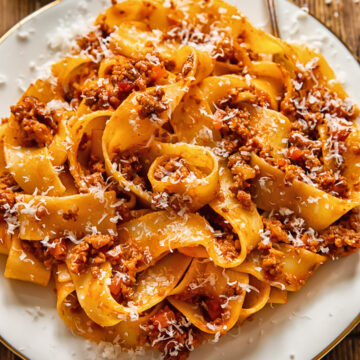Keep the meal local with a Tuscan Panzanella Salad or Mushroom Crostini. Tuscany evokes dreamy scenes of rolling hills, drenched in sunshine. An inspiring landscape and history brimming with food, paintings and sculpture. Vines dripping with plump grapes and juicy olives, platters of locally cured meats and cheese washed down with wine and a view. It’s a fresh produce paradise. And when I need to revisit, I have this Tuscan ragu to take me there.
What is ragu?
Here’s a riddle for you: Ragu is not bolognese, but bolognese is ragu. How is this possible? If you know your Italian, or your Italian food, you will have solved this pronto. Ragu literally means ‘meat sauce’, while bolognese is a meat sauce coming from the region of Bologna. The two are not interchangeable! And don’t go asking for ‘spaghetti bolognese’ in Italy. You’ll be met with a blank stare. They’ve never heard of it! The meat in ragu can vary from region to region. Here is my take on Venetian ragu fore example. I made mine with chicken thighs while traditionally it is made using rich and succulent duck. This ragu sauce recipe mixes ground beef and pork sausage as they are easily available and a family favourite. However, for a more adventurous ragu di carne, try rabbit or even wild boar. These two variations are typical of the Tuscan region. But there is more to ragu than just meat. The other key elements are soffritto and patience. Soffritto means ‘slow fried’ and is an invisible trinity of onion, carrot and celery that is the base of many a tomato and meat sauce, stew or soup like Pasta e Fagioli. A cunning way of sneaking in one of the five a day for the veg-averse. And patience. Your ragu won’t be rushed. It’s crucial to allow the flavours of the meat, vegetables, herbs and wine to meld and develop. It’s the only way to achieve the intensity and complexity of a true Tuscan ragu.
Tuscan flavours
Summer days in Tuscany average 11 hours sunshine. Imagine what this does for agriculture! Think heaps of glistening olives, garnet-coloured sun-dried tomatoes, leafy cavolo nero aka Tuscan kale and vibrant basil. Not to mention beans, cheese, steak and, of course, wine. Tuscan fare is fresh, hearty and honest. It’s no wonder that there are recipes upon recipes created from native ingredients. Make sure you search my blog further if you’re hungry for more, possibly starting with Tuscan chickpea soup! The most typical pasta you will see all over Tuscany is pici, which is hand rolled and looks like thicker spaghetti. If you can find pici, serve it with this ragu. If not, widely available pappardelle is a great choice for this hearty, meaty sauce.
Storage and leftovers
This is a double-or-nothing recipe. Unless you’re having a big Italian style family get together, you should be able to set aside half the ragu for freezing. Put the sauce in an air tight freezer-safe container and store for up to 6 months. Defrost before using in your next ragu based dish, like my Best Lasagne Recipe. Or if you want to go low carb, try my Stuffed Spaghetti Squash Recipe. Ragu makes for great leftovers! The sauce will be even more satisfying a few days later when the flavours have steeped in the sauce. Cover and keep in the fridge for 2-3 days. I tend not to keep any leftover pasta though and reheat the sauce on the stove top in the time it takes to cook a fresh serving.
More Tuscan Recipes to Try
Tuscan Chicken in Saffron Cream Sauce Kale Pesto Pasta with Pangrattato Pan Fried Zucchini with Basil and Pecorino Italian Antipasti Platter
